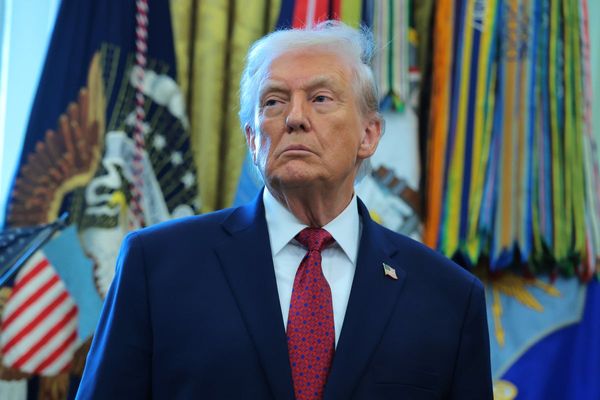
From 19 July to 3 August 1952, the Finnish capital Helsinki hosted the 15th Summer Olympics, the first games of the modern era. The world's biggest sporting event after the Second World War took place at the height of the Cold War and marked the beginning of East-West rivalry.
The capital of Finland was chosen by the International Olympic Committee (IOC) to host the 1940 Summer Olympics, replacing those held in Tokyo. However, those Games were cancelled because of the Second World War.

After the end of the war, the IOC decided in 1946 to relaunch the modern Olympic movement, starting with the organisation of the 14th Summer Olympic Games in 1948 in London, England. In the aftermath of the war, Great Britain, like the rest of Europe, was exsanguinated and in a period of austerity.
In 1948, London was rebuilt as the simplest of Olympic Games (OG). The infrastructure, competition venues and athletes' villages were basic.
In all, more than 4,000 athletes from 59 delegations took part in 136 events in 17 sports. Like the countries that had provoked the world war, Japan and Germany, the defeated countries, were not invited, while the Soviet Union was invited but boycotted.

Helsinki 1952 Olympics: Games of two blocks
Four years later, 4,955 athletes representing 69 countries and regions took part in the Helsinki 1952 Olympic Games.
In addition to the return of Japan and Germany, 13 countries and territories took part for the first time, including the USSR, Israel, a newly created state recognised by the United Nations in 1948, and Vietnam, a country in the midst of political confusion.
In the spirit that the Olympic sporting event should be a great celebration of humanity in a time of peace, Finland, the host country, wanted to invite as many delegations as possible.
So the Russian delegation, under the banner of the USSR, returned to the Games after a 40-year absence. Since the Bolshevik revolution of October 1917, the USSR had considered the Olympic Games to be a bourgeois and capitalist practice, which led to its withdrawal from the event.
In 1952, the Cold War began and the world was divided into two blocs, the Western bloc behind the United States and its allies, and the Eastern bloc behind the Soviet Union and its satellite countries.
Launching themselves into a terrible arms race, both West and East sought to demonstrate their supremacy in extremely diverse fields: scientific, cultural, military, space and sporting.
In an interview with RFI, Thierry Terret, a historian of sport and the Olympic movement, said: "The political stakes werre immense."
As a result, the stadiums at Helsinki 1952 became a showcase for the power of the two worlds. And at the height of the Cold War, the two blocs were able to compare themselves through the medium of champions, this time to the advantage of the Americans, said Terret.
Apart from the purely sporting competitions, the East-West polarisation also posed new challenges for organisers, not least the problem of providing Olympic villages for the athletes. "This innovation from the 1924 Paris Games was intended as a sort of symbol of peace and, in any case, of unity between athletes of all origins," Terret explained.
"In 1952, the USSR rejected this symbol and demanded that its athletes be given a separate village."
This was to be the premises of the future Helsinki University of Technology. Delegations from five satellite countries accompanied the Soviets and a banner representing Stalin was erected there in place of the Olympic flag.
"We were definitely in the middle of the Cold War," added Terret.
Vietnam's first games
While the 1952 Helsinki Olympics took place against a backdrop of major geopolitical confrontation, Vietnam's first Olympic participation also reflected a very turbulent political situation in the country.
The end of the Second World War and the surrender of Japan, which had occupied French Indochina since 1940, enabled Việt Minh, a nationalist front led by Hô Chi Minh's Communist Party, to proclaim independence on 2 September 1945, thus creating the Democratic Republic of Vietnam.
However, the return of the French to Vietnam led to the Second Indochinese War. At the end of 1946, Ho Chi Minh's government withdrew to Viet Bac, a mountainous region in North Vietnam, to fight the French until total victory in the battle of Dien Bien Phu in 1954.
In the South, until 1954, the French accepted the creation of a State of Vietnam within the French Union.

It was against this backdrop that the State of Vietnam sent its first sports delegation to the Helsinki Olympic Games in 1952.
In November 1951, the Vietnam National Olympic Committee was created and quickly recognised by the IOC.
For the first time, the yellow flag with three red stripes of the State of Vietnam was hoisted alongside the flags of 68 other countries at the Helsinki 1952 Olympic Games.
The eight athletes from the Vietnamese delegation took part in seven competitions in five sports: athletics, boxing, epee, swimming in the 100m and 400m freestyle events and cycling.
They came to compete in the Olympic arena with national pride.
At the following Olympic Games, in 1956 in Melbourne, Australia, 1960 in Rome, 1964 in Tokyo, 1968 in Mexico and 1972 in Munich, an increasing number of Vietnamese athletes took part under the flag of the Republic of (South) Vietnam.
During this period, the communist government in North Vietnam was not allowed to take part in sporting activities within the Olympic movement.
Five years after the country's reunification, in 1980, the IOC officially recognised the Vietnam National Olympic Committee as a member of the World Olympic Movement, and Vietnamese athletes were entitled to take part in the Olympic Games and other sporting events in the region.
The reintegration of Vietnamese sport into international competitions began with the country's participation in the 1980 Moscow Olympics in the former Soviet Union, an Olympics that was once again fraught with political issues.







